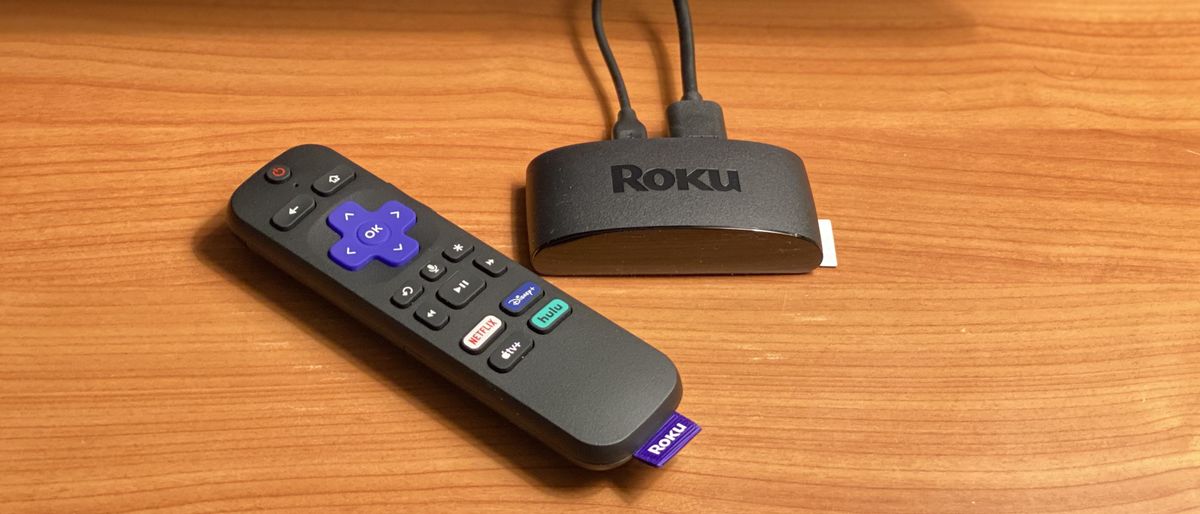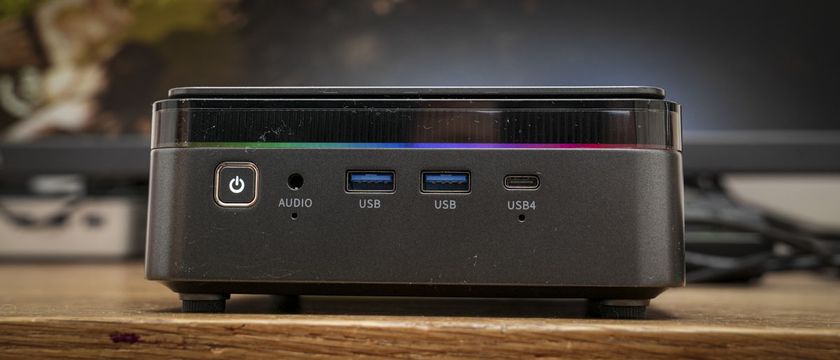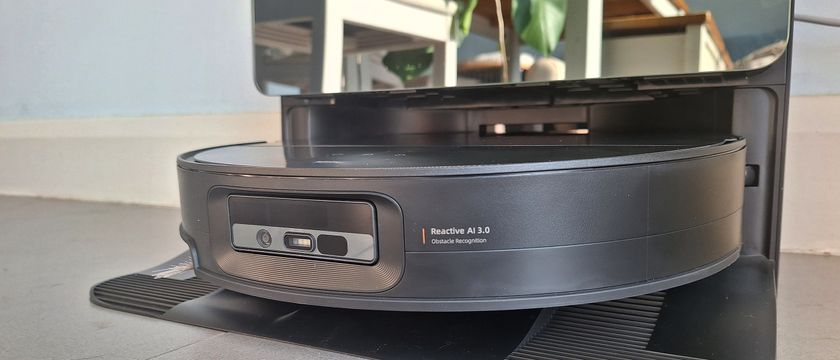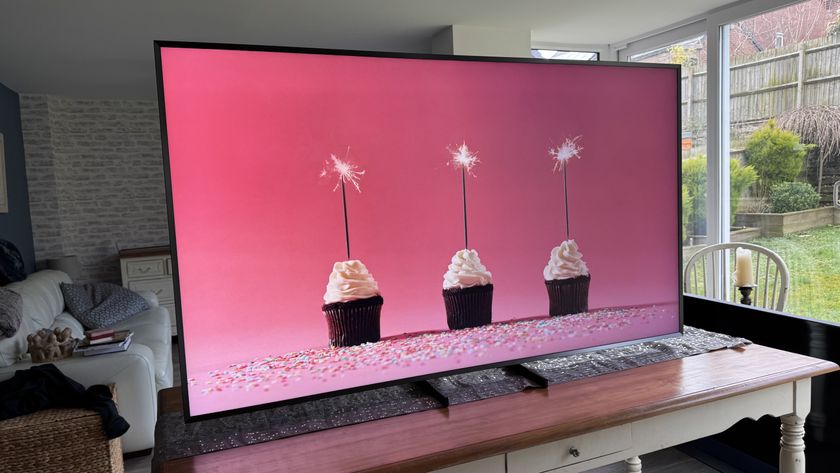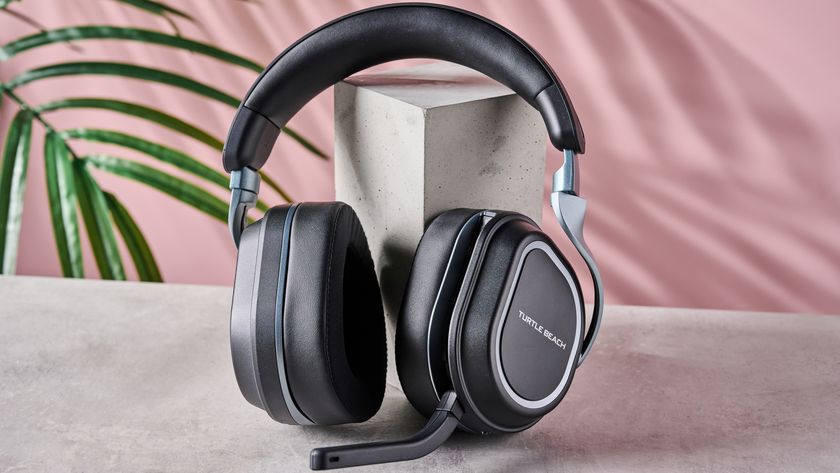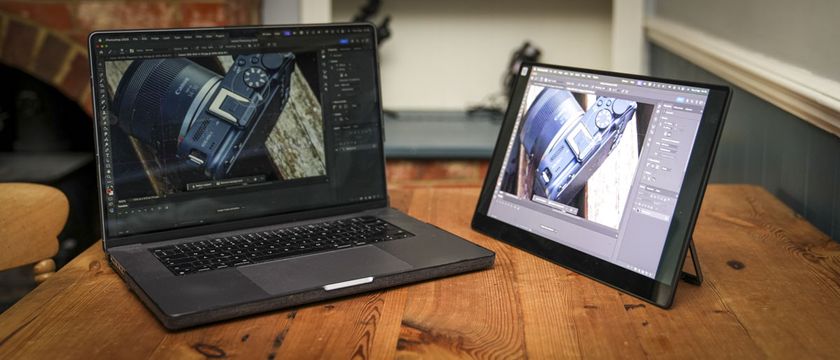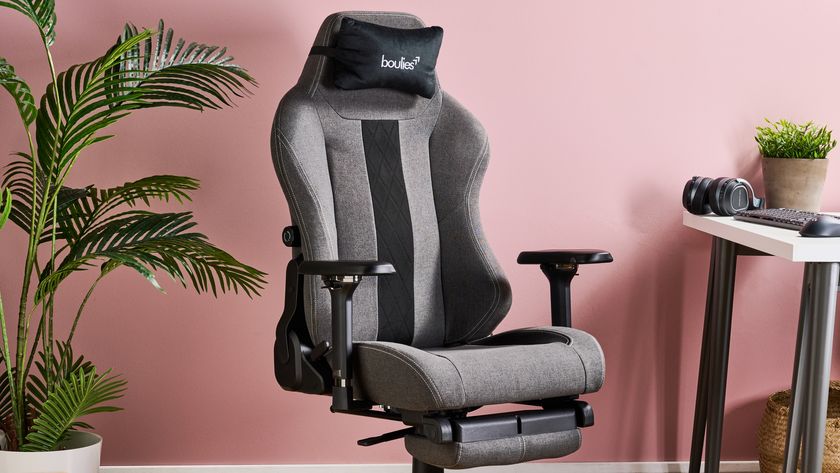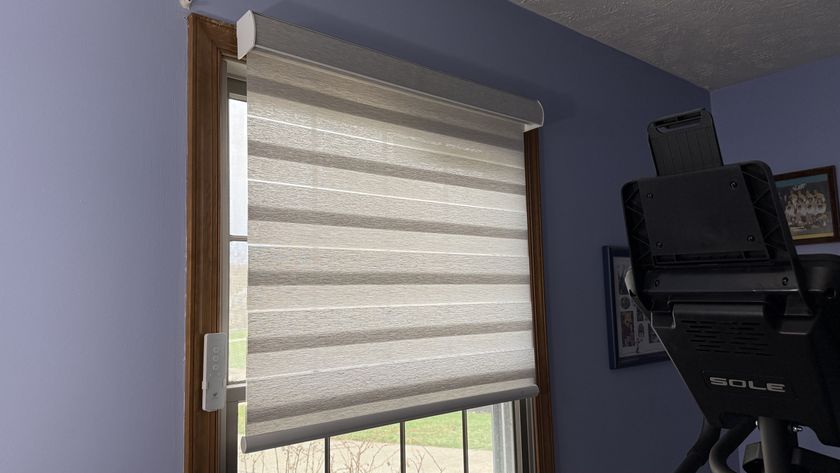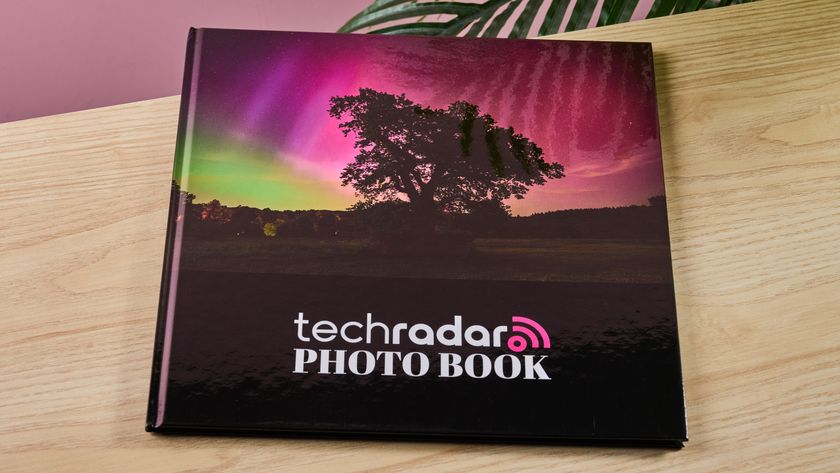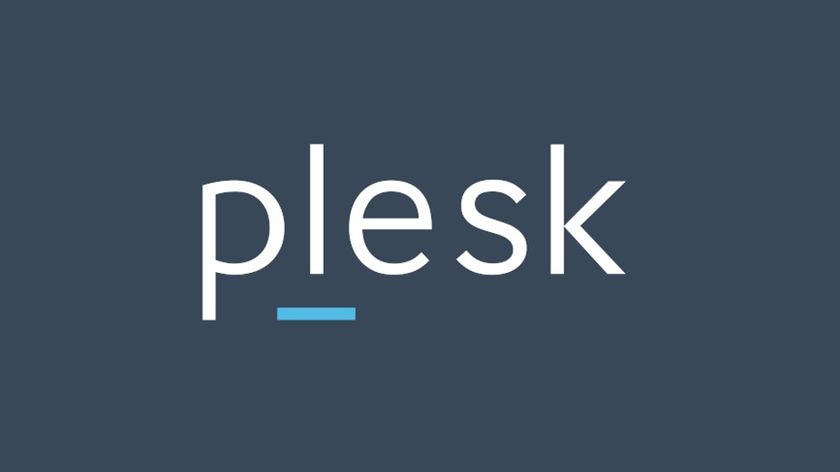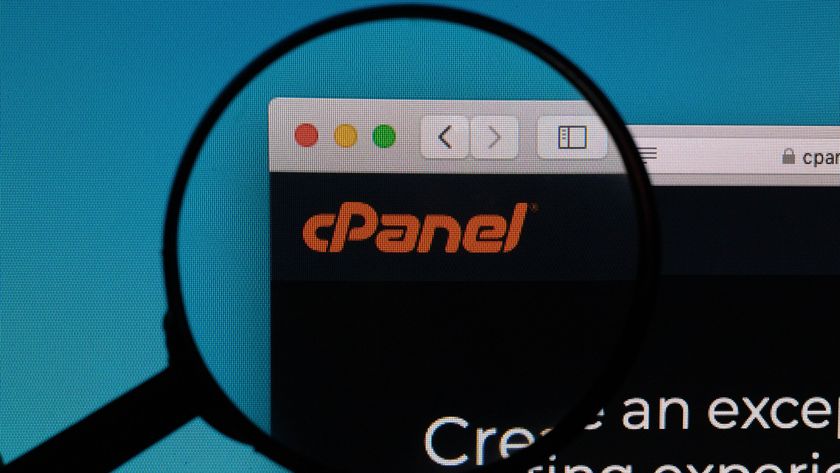TechRadar Verdict
The Roku Express 4K+ drops a few features to hit its $39.99 (around £28, AU$50) sticker price, but even without Dolby Vision or Dolby Atmos passthrough it's a rock-solid budget streaming device.
Pros
- +
Affordable price tag
- +
4K HDR (and HDR10+) streaming
- +
Comes with a Bluetooth remote
- +
Roku OS is easy to use
Cons
- -
No Dolby Vision support
- -
Limited wireless range
- -
Short HDMI cable
- -
Roku OS is a bit boring
Why you can trust TechRadar
30-second review
The new Roku Express 4K+ (2021) is proof that, if you wait long enough for a technology to proliferate, you can eventually buy it at an incredibly low price. Such was the case of SSDs, USBs and high-capacity RAM, and now the same is true for 4K HDR streaming devices.
What the Roku Express 4K+ offers is 4K HDR streaming at up to 60 frames per second over HDMI 2.0b with support for HDR10+. There’s no Dolby Atmos support or Dolby Vision support, two high-end formats for spatial audio and HDR respectively, but you’re getting most of the features of streaming devices that used to cost over $100 for just $39.99.
While it’s missing those high-end formats that the Roku Ultra has, and its range is a bit shorter than the slightly more expensive Roku Streaming Stick+, the Roku Express 4K+ is Roku’s answer to the Amazon Fire TV Stick 4K and Chromecast with Google TV – it’s affordable, has all the same streaming apps (including YouTube and YouTube TV which have just returned) and it comes with a remote.
That being said, we still really like the Fire TV Stick 4K and Chromecast with Google TV a bit more than the new Roku Express 4K+. The former offers new experiences like Amazon's Luna game-streaming service while Chromecast with Google TV has a content-first approach with solid recommendations. Both are more expensive, however, so if you just want the cheapest 4K streaming device, well, look no further.
Roku Express 4K+ price and release date
The Roku Express 4K+ dropped in mid-May in the US for $39.99, with a cheaper $35 version called the Roku Express 4K available exclusively at Walmart for $35. You can get the Roku Express 4K in the UK too for £39.99.
The key difference between the two models is that the Roku Express 4K+ (reviewed here) uses a Bluetooth remote while the standard Express 4K uses an IR remote. For an extra $5 it’s definitely worth buying the Bluetooth remote that can control the TV.
Where things become slightly more confusing is when you talk about the new Roku lineup. It starts with the basic HD-only Roku Express ($29.99) that’s followed by the new Express 4K+ ($39.99), but then there’s the Roku Streaming Stick+ ($49.99) that also streams in 4K and often only costs $39.99 when it’s on sale and the Roku Ultra that also streams 4K content – but can do Dolby Atmos and Dolby Vision as well. That’s not even mentioning the soundbar-streaming player hybrids, the Roku Streambar and Roku Streambar Pro (formerly called the Roku Smart Soundbar) or TVs that come with Roku built-in that can sometimes be found for around $150 like the TCL 3-Series TVs.
Long story short? Roku makes great products but its product lineup is getting a bit hard to follow – even for someone whose job is to cover streaming devices.
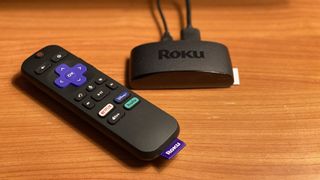
Design
Despite the potential to cause some confusion, it makes sense why Roku named it the Roku Express 4K+ – it looks exactly like the Roku Express.
At 0.7 x 3.4 x 1.4 inches (H x W x D) it’s nearly the same size as the original Roku Streaming Stick and, funny enough, it’s even smaller than the remote that comes inside the box. But, the benefit to its small form factor is that you can throw it in a bag or store it on your media shelf without it taking up too much real estate.
Roku also includes a two-foot-long HDMI cable in every box, a remote and double-sided adhesive tape that will allow you to stick the Express 4K+ onto your TV or on any surface. The inclusion of all these accessories is actually somewhat surprising – while other manufacturers are all too happy to send you out the door without all the necessary equipment in hand, the Roku Express 4K+ is a complete kit.
The only corner that Roku cuts here is that the HDMI cord is on the shorter side. It’s long enough to reach the ports of a 65-inch screen while still laying flat on the table, but just barely. If you had a larger TV or if you wanted to keep the Express 4K+ anywhere other than right underneath the TV, you’re going to need another cord.
We do have to give Roku some props on the remote that comes with a built-in microphone as well as volume buttons and a power button that can control the TV over HDMI-CEC. It’s not quite as good as the new Roku Voice Remote Pro that has two programmable buttons, a headphone jack and a mid-range microphone array that can pick up your voice from across the room, but considering that it only costs $5 more than the basic IR remote, it’s a steal.
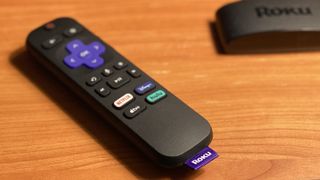
Roku OS
If there’s a more fully featured app store on a set-top box, we’d like to see it. Roku may not have literally everything, but this is as close as it’s going to get. Roku boasts more than 4,500 channels ranging from the streaming mainstays, like Netflix, HBO and Vudu, to the obscure – there's actually a station called "The Fireworks Channel" – so finding something to watch is rarely a problem.
For US viewers, all the big names are here: Netflix, Amazon, Hulu, Disney Plus, Apple TV, Peacock, YouTube, Crunchyroll, Plex and Pandora and Spotify. You can rent and buy individual movies and TV through Vudu and Fandango, the latter of which is the de facto rental service on the streamer.
The newest addition to Roku’s channel lineup is HBO Max, which finally made its appearance after a lengthy contract negotiation process. To download the app, go into the 'Featured' section of the channel store or search for 'HBO Max' through the Roku voice remote or Roku app on your mobile device. Once it’s downloaded, follow the on-screen directions to log in through your provider or enter your username and password.
Cord cutters who live in the US will also have access to Sling TV , plus The Roku Channel, which offers its own selection of TV shows and movies. If you ever struggle to find something to watch, there’s the Featured Free section of the homepage that shows you what's available for free on the different services. These are invaluable resources for cord-cutters, and a great alternative to channel surfing for folks who still have a box.
What’s missing here, however, is a competent, built-in smart assistant like Alexa or Google Assistant. What Roku does offer is its new Roku Assistant, which can understand and answer basic queries like ‘what time is it?’ or ‘what’s today’s date?’ but can’t interact with your smart home or any of your smart gadgets in a meaningful way. Both the Amazon Fire TV Cube and Nvidia Shield come with Alexa and Google Assistant, respectively, so for both to be missing here on Roku’s high-end player feels like another misstep.
Where we’re willing to give Roku some credit, though, is for its integration with Amazon and Google smart devices. While Roku can’t control either platform, both platforms can be used to control your Roku – which is handy if you don’t want to walk over and grab the remote. (Though, admittedly, we often just opt to use Roku’s mobile app in that case.)
The only problem we have with Roku OS is that it’s not very sleek. We’ve seen the same tile-based app home screen for most of the last decade with few overall changes. In some ways, that’s great for users who hate change, but it has meant that Roku OS does look a bit less sleek than, say, Google TV, tvOS on Apple TV 4K or even the new Amazon Fire TV.
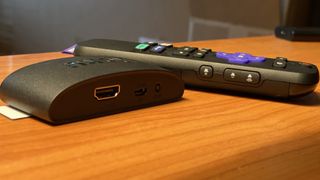
Performance
Starting up the Roku Express 4K+ requires you to sign into a Roku account (it’s easy if you already have one and slightly more complicated if you don’t) before selecting which streaming service you want preloaded on the device.
Switching from one app to another happens fairly quickly, and there’s only a second or two where you might have to wait for a menu to populate with images. That said, how quickly streams buffer and menus populate with images will all depend on your internet connection speed – so make sure you pay for more than 15Mbps before buying a 4K streaming device.
Even if you pay for a great connection, however, you probably won’t get all of that bandwidth over to the Roku Express 4K+. For example, we have a 800Mbps fiber connection running into the router at our house – but the Roku Express 4K+ can only use about 40Mbps. That’s due, in part, to the location of the Roku Express 4K+ (it’s located two rooms away from the router) and the design decision to pack in the wireless antenna into the housing of the player instead of along the power cord like we saw with the Roku Streaming Stick+.
The good news? Even with only 40Mbps, streams buffered quickly and remained at 4K HDR quality for the entirety of our streaming sessions. That’s no guarantee you’ll get the same results, but it’s a good indicator for us that the Roku Express 4K+ is as good as the Roku Ultra at holding a connection, even if it can’t handle Dolby Vision or Dolby Atmos.
Ultimately, the Roku Express 4K+ is a moderately powered streaming device – it's not the fastest or the slowest on the market, but somewhere right in between. If you want lightning speeds, you'll have to switch over to a more powerful player, but most folks will feel just about the Roku Express 4K+.
Should you buy the Roku Express 4K+?
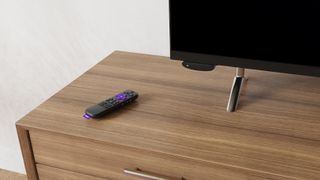
Buy it if...
You want a great deal on a 4K HDR streaming player
Look, you're here because you want a great deal on a solid 4K HDR streaming device – and the Roku Express 4K+ has you covered there. At $40, it's a supremely good value that typically undercuts both Amazon and Google (except, maybe, during Amazon Prime Day).
You want something that's easy to use
Roku OS is super simple to use. The interface is easy to navigate, and the four quick launch buttons on the remote should take you directly to the most common ports of call.
You have other Roku devices already
If you already have a Roku account setup, adding another player to your collection is extremely easy. Setup takes less than five minutes and the new player should look exactly like your old one.
Don't buy it if...
You want to feel like you're on the cutting-edge of technology
Roku's OS is fully stocked with nearly every major streaming service, but the overall presentation really hasn't changed in close to a decade. Ultimately, what that means is that it's an easy-to-use player, but not necessarily the most slick or sleek one to use.
You care a lot about Dolby Vision
With HDR10+ on-board you can get a taste of what dynamic metadata-based HDR is all about. However, without Dolby Vision you won't get the most out of streaming services like Netflix or Vudu.
Your TV is located really far away from your router
If your entertainment setup is really far away from your router – more than four or five rooms away or on a different floor – you might want to consider upgrading the wider-reaching Roku Streaming Stick+ instead.
- Ready to ditch cable? Check out our guide to the best streaming devices
Nick Pino is Managing Editor, TV and AV for TechRadar's sister site, Tom's Guide. Previously, he was the Senior Editor of Home Entertainment at TechRadar, covering TVs, headphones, speakers, video games, VR and streaming devices. He's also written for GamesRadar+, Official Xbox Magazine, PC Gamer and other outlets over the last decade, and he has a degree in computer science he's not using if anyone wants it.

Has x86 lost the data center battle? Arm claims victory as it declares close to 50 percent of compute shipped to top hyperscalers in 2025 will be Arm-based
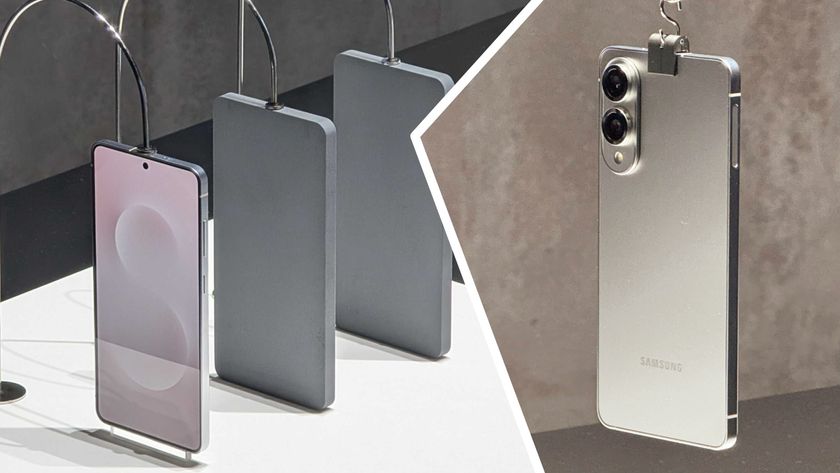
I'm excited for the Samsung Galaxy S25 Edge and iPhone 17 Air, but I'm worried they'll make too many compromises
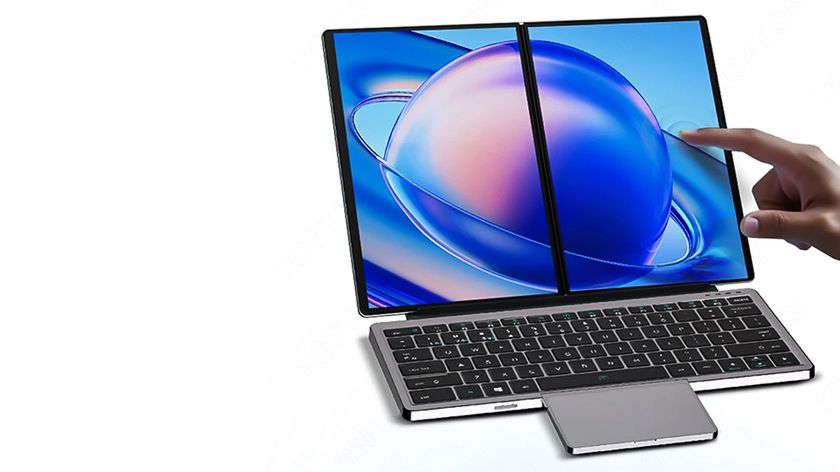
This dual screen laptop has something I've never seen in any notebook: a retractable hidden touchpad
